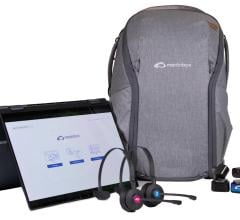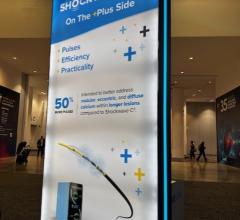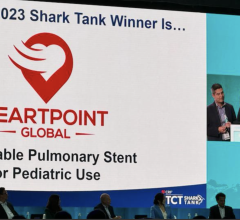
September 16, 2022 — Teleflex Incorporated, a leading global provider of medical technologies, announced that Dr. Magnus Settergren, Asssociate Professor at the Karolinska Institutet, Interventional Cardiologist at Karolinska University Hospital, and Co-Author of the Percutaneous plug-based vascular closure device in 1000 consecutive transfemoral transcatheter aortic valve implantations Study, is scheduled to present at a Teleflex-sponsored Training Pavilion at the Transcatheter Cardiovascular Therapeutics (TCT) conference this Sunday, September 18, 2022 at 10:00 a.m. (ET). TCT is the Cardiovascular Research Foundation's (CRF) annual scientific symposium and the world's foremost educational forum specializing in interventional cardiovascular medicine.
The Karolinska 1000 Consecutive MANTA Device Study—the largest ever real-world evaluation of the MANTA Device—demonstrated safety and effectiveness with low complication rates and a short learning curve.1 Results of this study were published in The International Journal of Cardiology.
This single-center, observational study reviewed 1048 consecutive, unselected subjects undergoing transfemoral Transcatheter Aortic Valve Implantation (TAVI) from May 2017 to September 2020 at the Karolinska University Hospital in Stockholm, Sweden. The 18 French MANTA Device was used by five operators to close the femoral artery access site in 1000 subjects (48 excluded), with the primary outcome being the measure of vascular closure device (VCD)-related major complications according to Valve Academic Research Consortium (VARC)-2 definition criteria.1
The study, which was not sponsored by Teleflex, demonstrated that MANTA Device related major vascular complications occurred in 4.2% of patients with no significant differences in preoperative characteristics between patients with and without MANTA Device related major vascular complication.1 This outcome is consistent with the results of the SAFE MANTA IDE Clinical Trial, published in 2019 in Circulation: Cardiovascular Interventions, which demonstrated a 4.2% VARC-2 Major Vascular Complication Rate, as well as The MARVEL Prospective Registry, published in 2020 in Catheterization & Cardiovascular Interventions, which demonstrated a 4.0% VARC-2 Major Vascular Complication Rate.2,3
“As interventionalists, we frequently hear that one of the argued benefits of the MANTA Device compared to suture-based VCDs is a comparatively shorter learning curve; however, few studies have included a learning curve analysis,” said Dr. Settergren. “Our study found no significant differences in major complications between interventionalists, whether in their first 20 MANTA Device deployments, or even across the the first 100 procedures at the center.”
“The findings of our study indicate that the MANTA Device is easy to learn and has a short learning curve, which is in line with our user experience. I look forward to presenting our learnings from this real-world experience to my colleagues at TCT this weekend,” concluded Dr. Settergren.
About the MANTA Vascular Closure Device
The MANTA Device is the first commercially available biomechanical vascular closure device designed specifically for large bore femoral arterial access site closure. The MANTA Device has now sold 100,000 units globally with 6+ years of commercial clinical experience. The device has been studied in 35+ clinical studies—25 focused on TAVI/TAVR.4
For more information: https://www.teleflex.com/usa/en/
References:
- Kastengren, M, Settergren, M, et al. Percutaneous plug-based vascular closure device in 1000 consecutive transfemoral transcatheter aortic valve implantations. International Journal of Cardiology. 2022; Vol 359. https://doi.org/10.1016/j.ijcard.2022.04.033
- The SAFE MANTA IDE Clinical Trial. Study sponsored by Teleflex Incorporated or its affliates.
- Kroon HG, Tonino PAL, Savontaus M, et al. Dedicated plug based closure for large bore access –The MARVEL prospective registry. Catheter Cardiovasc Interv. 2020;1–9. https://doi.org/10.1002/ccd.29439
- Data on file at Teleflex.


 October 16, 2024
October 16, 2024 








